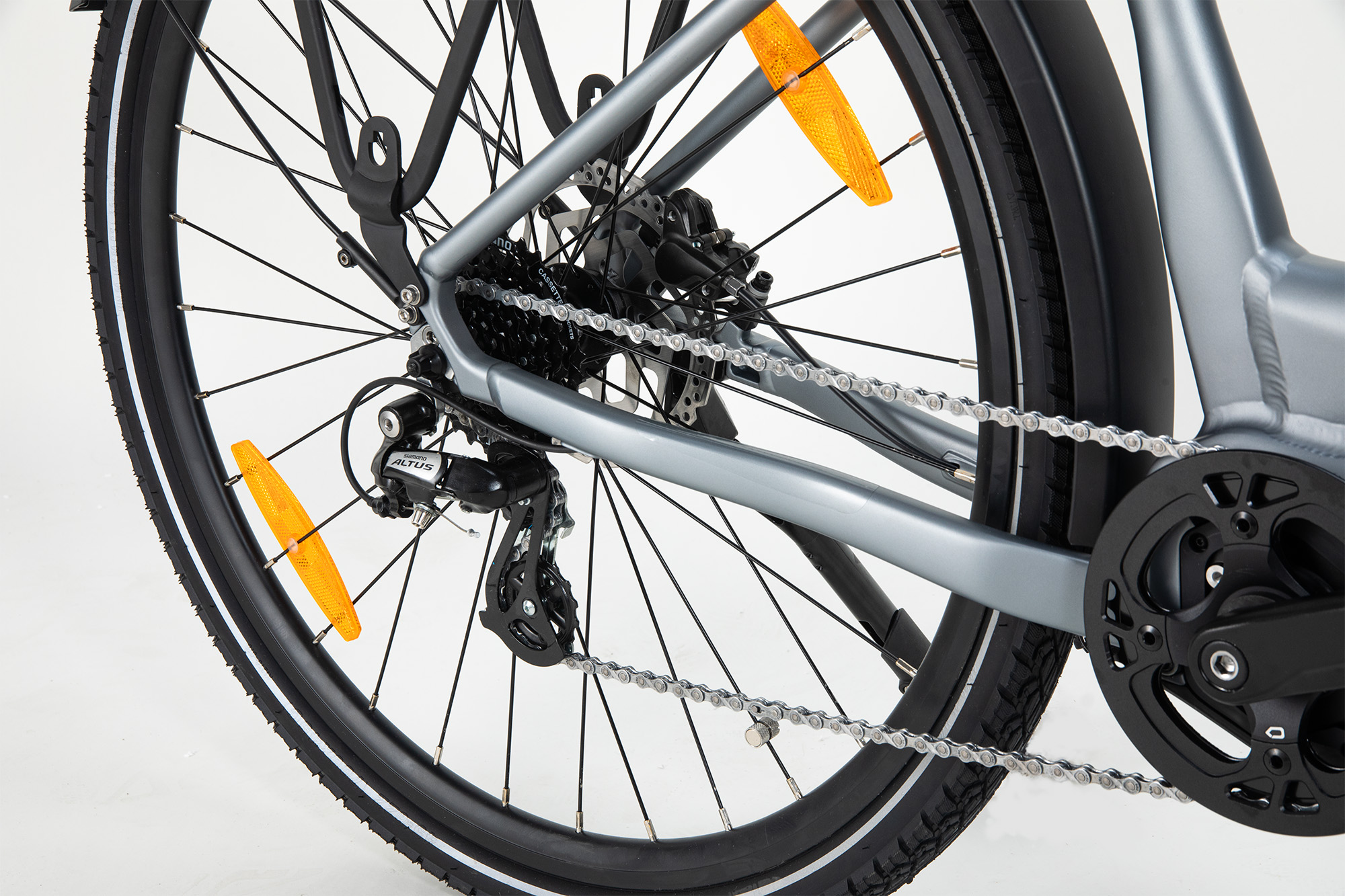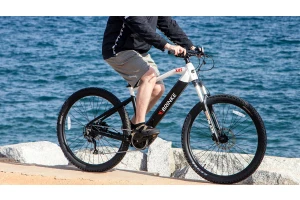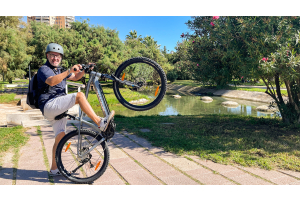August 27, 2024

Things You Need to Know About Cycling (7) - Bicycle Drivetrain
The drivetrain of a bicycle allows you to pedal forward and shift between different gears, making it easier to ride on various inclines. Below, we describe the different components that make up the drivetrain and explain their functions.
What is a drivetrain?
The components in a drivetrain work together. A drivetrain consists of parts that help move your bicycle forward. From a broader perspective, the drivetrain is part of a kit that also includes shifters and brakes. While shifters are not included in the drivetrain, they are essential components that control the drivetrain when shifting gears.
What components make up a bicycle drivetrain?
It usually includes one or two derailleurs, which are mechanisms that move the chain when the shifter is engaged. The chain is a part of the drivetrain. It runs through the relevant derailleur and the cassette and crankset, which house your gear ratios. Not all bicycles are equipped with multi-piece cassettes, such as single-speed bikes, and some bicycles use alternatives like belt drives.
1x vs. 2x Drivetrains
A 1x drivetrain does not have a front derailleur. The best gravel bikes and the best mountain bikes increasingly use 1x drivetrains instead of the 2x systems common on road bikes. The 2x drivetrain has two front chainrings and a front derailleur, while the 1x drivetrain lacks a front derailleur and uses a single chainring. The 1x drivetrain reduces some weight due to fewer components and does not require a front shifter cable.
Crankset
The crankset is the core component of the drivetrain. The crankset helps move the chain when you pedal, transferring power from your legs to the rest of the drivetrain, and eventually to the rear wheel, helping you move forward. The crankset includes two crank arms and chainrings, on which the chain runs. Bottom bracket bearings allow the crankset to rotate smoothly and freely.
Chainrings
Chainrings come in various sizes tailored to your needs. Chainrings are essentially your front gears, composed of teeth that hold the chain in place. Bicycles usually have one to three chainrings. Consider the gear range you want to use with your cassette. Chainrings come in various sizes, determined by their tooth count. For example, a 50-34 chainring indicates the outer ring has 50 teeth, and the inner ring has 34 teeth. If you're using a 1x chainring, it will be listed as a single number, such as 40t, meaning it has 40 teeth.
Cranks
The crankset includes two crank arms to which the pedals are attached via threaded parts. Cranks come in different lengths, typically ranging from 165mm to 175mm, with longer lengths providing more leverage. Crank length is generally determined by the size of the bicycle and the corresponding rider height. However, leg length may vary at different heights, so this can be an area to explore for optimal performance.
Front Derailleur
The front derailleur moves the chain between different chainrings. It moves the chain between the chainrings in the crankset. As the name suggests, it derails the chain from one chainring and pushes it onto another. In most shifting systems, the front derailleur is driven by the left shifter. Some electronic shifting systems allow customization of which button controls which derailleur through their respective apps. A 1x drivetrain bicycle does not have a front derailleur, which is common on mountain bikes and gravel bikes.
Rear Derailleur
Cassette
The cassette is a set of replaceable gears mounted on the rear wheel, with the rear derailleur moving the chain up or down the gears. Cassettes come in various sizes, often denoted by their smallest and largest gears. For example, an 11-32 cassette has an 11-tooth smallest gear and a 32-tooth largest gear. Gravel and mountain bikes tend to have a wider range cassette than road bikes. This is because gravel and mountain bikes are often equipped with 1x drivetrains to help tackle steep climbs and provide faster riding on flats and descents. The cassette is mounted on the wheel's freehub, with internal splines aligning with the freehub body.
Chain
The chain consists of a series of links, with most chains featuring alternating wide and narrow links that repeat throughout its length. Chains also come in different "speeds," and you should use the right chain for your groupset speed. It's also worth checking if the new chain is compatible with your specific groupset. Chains wear out over time, elongating and increasing lateral play between links. They are usually the first component you need to replace in the drivetrain. If not replaced in time, the chain can wear down the cassette and chainrings, which are more costly to replace than the chain. Therefore, it's important to monitor your chain's wear and replace it when needed.
E-Bike Drivetrains
Most mid-drive motors mounted at the bottom bracket are not compatible with front derailleurs. E-bike drivetrain systems can differ from traditional non-assisted bicycle gearing systems, depending on the type of motor they use. If using a hub-based motor, the e-bike drivetrain is similar to non-assisted bicycles. If using a mid-drive motor, commonly found on the best e-bikes, the front derailleur usually is not compatible. Hence, the system will use a 1x drivetrain. However, there are some exceptions.
Single-Speed and Fixed-Gear Drivetrains
Single-speed solutions provide a simplified aesthetic. Single-speed and fixed-gear bikes have simpler drivetrains than those with derailleurs.
Belt Drive Systems
Some bicycles use a belt drive instead of a chain. They are especially popular among commuters as they are cleaner than chains, reducing the risk of dirtying clothing. They are also increasingly found on e-bikes. Belt drive systems forgo cassettes and chainrings. They require less maintenance as they are not made of metal and thus don't need degreasing or lubrication. Typically, these systems run quieter, are more durable, but less efficient, usually more expensive, and finding replacement parts can be difficult.
Internal Gear Hubs
Internal gear hubs are another popular drivetrain system often found on commuter bikes. These systems integrate the gears into the rear wheel hub, resulting in less maintenance. However, they tend to be heavier and more challenging to maintain than external derailleur systems.


 English
English  Español
Español  Deutsch
Deutsch 



Validate your login